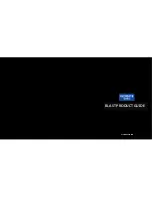
Technical Note Volume 3, Number 2A
The New JBL LSR6300 Series Studio Monitors
1. Introduction:
In earlier days, studio monitor loudspeakers were
designed for flat on-axis response, with secondary
concern for off-axis response uniformity. With the
introduction of JBL’s Bi-Radial
®
monitors in the early
1980s, JBL began to address the balance between on-
and off-axis response and the importance of this
balance in ensuring that the combination of direct and
reflected sound reaching the listener was uniform. In
the late 1990s JBL introduced the first LSR (Linear
Spatial Reference) products, and now the LSR6300
Series has been improved to achieve an even higher
degree of performance.
The new models use improved structural materials for
further damping and rigidity of the enclosures. The
LSR6328P now has integral handles, and all LSR6300
products have built-in mounting points for ease and
flexibility of installation. The products in the group are
all THX pm3
®
approved.
The HF transducer in the full-range systems was
previously unshielded, making operation of the
systems in proximity to a CRT type video monitor
difficult. The new driver is shielded.
Most significant is the addition of JBL RMC™ Room
Mode Correction to two of the powered LSR6300
models. RMC provides a means for precise
equalization of the dominant room mode, thus
providing more accurate LF response of the
LSR6328P and LSR6312SP in typical production
environments. It is explained in fuller detail in the User
Guide that accompanies the RMC system calibration
kit.
2. The Linear Spatial Reference (LSR)
Concept:
Stated simply, LSR provides:
1. A forward listening angle over which the
system’s
direct sound field response does not deviate
from a given standard. This ensures that all listeners
located within a solid angle of
±
30 degrees horizontally
and
±
15 degrees vertically will hear substantially the
same balance.
2. An early
reflected sound field which is
substantially smooth, uniform, and free of irregularities
over the frequency range. This ensures that the
pattern of room reflections in the room will complement
the direct sound, not conflict with it.
3. A substantially smooth radiated power
response. This complements items 1 and 2. If the
room itself is acoustically uniform in its absorption
treatment, then the reflected sound field, in actuality
the room response, will likewise be uniform.
This response is achieved through careful selection of
crossover frequencies and slopes, placement of
drivers on the baffle, and the use of waveguides,
integral to the baffle, to shape the coverage angles of
MF and HF drivers.
The measurements shown in Figure 1A and B illustrate
the degree to which the LSR6332 and LSR6328P
attain their design goals. The labeled curves are
described below:
1. On-axis response.
2. Averaged response over a listening window which is
±
30 degrees horizontally and
±
15 degrees vertically.
3. Averaged simulated early reflections arriving 5 to 10
milliseconds after the direct sound and lasting for
approximately 10 to 20 milliseconds.
4. Total radiated sound power.
5. Directivity index of sound power.
71800_JBL.TechNote
8/26/04, 7:58 AM
1


























